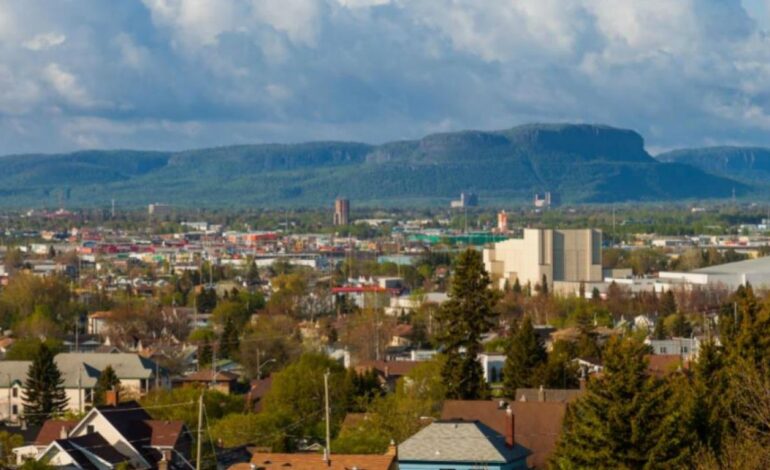
Moving to Northern Ontario: A Complete Guide for a Smooth Transition
Introduction
Thinking about moving to Northern Ontario? Whether you’re seeking a peaceful retreat, better job opportunities, or a more affordable cost of living, Northern Ontario has plenty to offer. This vast region is known for its breathtaking natural beauty, strong communities, and opportunities for both work and leisure. However, relocating to this part of Canada comes with its own set of challenges and considerations.
In this comprehensive guide, we’ll walk you through everything you need to know about moving to Northern Ontario, including the best places to live, job opportunities, lifestyle, and key factors to consider before making the move.
Why Move to Northern Ontario?
1. Affordable Housing
Compared to Southern Ontario cities like Toronto, housing in Northern Ontario is significantly more affordable. Whether you’re looking to buy or rent, you’ll find lower prices and larger properties, allowing for a better quality of life.
2. Stunning Natural Beauty
Northern Ontario is a paradise for outdoor enthusiasts. With countless lakes, forests, and national parks, residents enjoy activities like hiking, fishing, camping, and wildlife watching.
3. Smaller, Close-Knit Communities
If you prefer a slower pace of life and a strong sense of community, Northern Ontario’s towns and cities offer just that. People tend to be friendly, and there’s a greater sense of belonging compared to the hustle and bustle of larger metropolitan areas.
4. Career Opportunities in Growing Sectors
While Northern Ontario may not have the corporate hubs of the south, industries like mining, forestry, healthcare, and tourism provide solid job opportunities. With a lower cost of living, your income can go further.
5. Less Traffic and Pollution
Enjoy cleaner air and shorter commute times. Northern Ontario’s roads are far less congested than those in major cities, making for a more peaceful daily routine.
Best Places to Live in Northern Ontario
1. Sudbury – The Largest City in Northern Ontario
Greater Sudbury is home to about 160,000 residents and offers a mix of urban and rural living. It’s known for its vibrant arts scene, post-secondary institutions, and excellent healthcare facilities.
2. Thunder Bay – A Cultural and Economic Hub
Thunder Bay is the largest city in Northwestern Ontario and boasts a strong job market, particularly in healthcare and education. The city offers a beautiful waterfront and is known for its quality of life.
3. North Bay – Ideal for Families
North Bay provides a balance between small-town charm and city convenience. It’s an excellent choice for families due to its good schools, recreational facilities, and beautiful lakes.
4. Sault Ste. Marie – A Gateway to the Outdoors
Sault Ste. Marie offers a stunning natural setting, lower cost of living, and growing economic opportunities in tourism and trade.
5. Timmins – The Heart of Mining Industry
Timmins is a great option for those looking for job opportunities in mining, forestry, and related industries. It’s a small but thriving city with affordable housing and outdoor recreational activities.
Things to Consider Before Moving to Northern Ontario

1. Harsh Winters
Be prepared for long, cold winters with heavy snowfall. Investing in proper winter gear and a reliable vehicle is a must.
2. Employment Prospects
Ensure that job opportunities in your field are available before relocating. Some industries, like healthcare and skilled trades, have strong demand, while others may be limited.
3. Healthcare Access
While larger cities like Sudbury and Thunder Bay have excellent healthcare facilities, some remote areas may have limited access to specialists. It’s essential to research healthcare options in your desired location.
4. Transportation and Connectivity
Public transportation options are limited, so having a personal vehicle is crucial. Additionally, internet and cell service may be less reliable in remote areas.
5. Cost of Living Variations
While housing is affordable, some goods and services may cost more due to transportation and availability. Groceries, for instance, may have higher prices in more remote locations.
Frequently Asked Questions (FAQs)
1. Is Northern Ontario a good place to live?
Yes! Northern Ontario offers a high quality of life, affordable housing, and a strong sense of community. However, it’s important to consider factors like job opportunities and weather conditions.
2. What are the job opportunities in Northern Ontario?
Key industries include mining, forestry, healthcare, education, and tourism. Skilled trades and healthcare professionals are particularly in demand.
3. How cold does it get in Northern Ontario?
Winter temperatures can drop to -30°C or lower, especially in more northern areas. Proper winter preparation is essential.
4. Is it expensive to live in Northern Ontario?
The cost of living is generally lower than in Southern Ontario, especially in terms of housing. However, some goods and services may be more expensive due to transportation costs.
5. Are there good schools in Northern Ontario?
Yes! Northern Ontario has excellent public and private schools, as well as post-secondary institutions like Laurentian University, Lakehead University, and Cambrian College.
6. What is the population of Northern Ontario?
The region is home to approximately 780,000 people, spread across various towns, cities, and rural areas.
Conclusion
Moving to Northern Ontario can be an exciting and rewarding experience, offering affordability, natural beauty, and a tight-knit community atmosphere. Whether you’re looking for career growth, outdoor adventures, or a quieter lifestyle, Northern Ontario has something for everyone. Before making the move, consider factors like climate, job availability, and local amenities to ensure a smooth transition into your new home.






